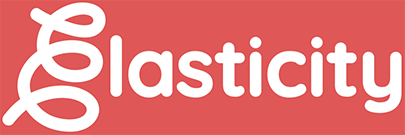When you’re scrolling through Doordash or clicking around Google Maps, hunting for an excuse to not cook a meal, what’s one of the first differentiators when narrowing or selecting where to order from? Is it the convenience, the memory of the taste or is it something else? Perhaps the appearance of what they’re serving?
While all of those are determining factors – it’s literally how I’m judging a lunch option right now – the most important question still remains: How did your feeling about the food change once you saw it with your own eyes?
Recently, class-action lawsuits have been cropping up targeting the biggest fast food chains regarding advertising their products. Their point of contention is the massive disconnect between the bulging meats in an Arby’s ad or the copious amounts of wet lettuce from Burger King images compared to the McDonald’s Big Mac that is 33 percent shorter, seriously lacking in lettuce and much less attractive than its advertised promise.

Usually, the lesson I learn from fast food generally relates to bad gut health about two hours after consumption. but there’s a bit more we can glean thanks to pointing this out – again. One of our partners wrote a post about this back in 2018, and over five years later we’re coming back to it. Not to take a victory lap but to bring up a really important component of modern brand relationships.
Authenticity.
Brand loyalty and retention are two incredibly difficult things to build but so easy to tear down. In a time when money doesn’t go as far and options are seemingly limitless, people are quickly wising up to false promises like fast food visual ads and seeking brands that will deliver on what is advertised. They’re thinking like a business: is their product worth my time and financial investment? If your brand isn’t delivering on expectations, many consumers (especially younger generations) are searching for competitors.
But brands and influencers that are staying honest, realistic and delivering on unique experiences are the ones that are continuing to expand. The obvious examples for food are Domino’s and Chipotle after making sweeping changes, but even non-food brands like The North Face, LEGO, Crayola, IKEA, Honda, and even Dollar Tree thrive on those promises. This isn’t to say that only the biggest of brands can be authentic, but they’re case studies to confirm that, hey, it works.
Just look at Pat McAfee. His brand of relaxed, tank-top-wearing, relatable people talking sports landed him and his show an $85 million deal with ESPN.

So, how exactly do you execute on this? When developing your marketing or public strategy, just keep “TOUR” in mind:
- Transparency. Not every piece of information you own is proprietary. People want to see how products and processes really are, and they factor that in their decision-making. The further you pull back the curtain without revealing the “secret sauce” the more trust you’ll build with your audience. People will be able to tell if you’re pulling the wool over your eyes with buzzwords or advertising. Let them in. The proof is in the pudding, so to speak.
- Observe. Every idea is spectacular in a vacuum, but knowing your audience’s tendencies and interests helps tailor alterations and marketing strategies toward who you’re trying to reach. See what they’re into and do your research on what makes them tick. This may seem obvious, but consider the PR nightmare that was the Bud Light campaign with Dylan Mulvaney.
- Understand. We are all human, and we’re going to make mistakes. Don’t shy away from admitting it…own it. Company responsibility is a key pillar in decision-making for younger generations, and audiences want to see brands that are listening to feedback, understanding why audiences feel the way they do, and taking action to grow and be better just like real people do. You’re going to have unavoidable short-term losses, but you can prevent long-term tarnishing by being more human.
- Relax. People in ties making decisions from a higher socioeconomic level aren’t relatable for most people, so your brand should not represent those people. Even though technology is breaking down traditional communities, people still want a sense of familiarity and belonging even with brands. We know there are real people behind every business, so let that shine through. Don’t be afraid to let your hair down and just be more human.
Don’t lose sight of the shared human experience. Every brand, influencer or personality needs that human connection in modern advertising. There is no one single recipe for success, and anyone that tells you that is lying to you. However, there are some guiding principles that you can follow to point you in the right direction.
Guess I should just make something at home for lunch. At least I know exactly what I’m getting.



